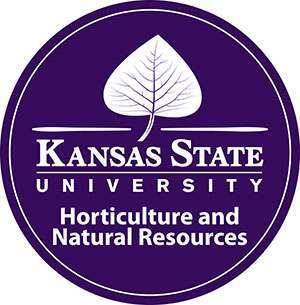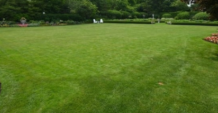1712 Claflin, 2021 Throckmorton Plant Science Center
Manhattan, KS 66506 (785) 532-6173
Online access: https://hnr.k-state.edu/extension/horticulture-resource-center/horticulture-newsletter/documents/2025/april2025/Newsletter%20005.pdf
ANNOUNCEMENTS:
K-State Garden Hour
Wednesday, April 2, 2025 12:00 PM – 1:00 PM
Maximize your garden’s productivity! Join Abbey Draut, Sedgwick County Food Crops Horticulture Agent, as she shares proven methods for increasing vegetable yields. Learn how to optimize soil health, select high-performing varieties, and implement effective care techniques to boost your harvest. Whether you’re a beginner or an experienced gardener, these practical tips will help you grow more food in your garden this season.
Register to attend this free webinar here:
https://hnr.k-state.edu/extension/consumer-horticulture/garden-hour/
Garden Spotlight
Send in your garden stories! Last year our Hort Newsletter featured six different gardeners/garden programs.
We love learning about our fellow Kansas gardeners and want to feature your home/community/school garden in our newsletter so we can all grow together.
Email hortsupport@ksu.edu to find out more.
VIDEO OF THE WEEK:
Squirrels are Nuts!
(KSRE Wildlife Management)
Dr. Joe Gerken and Dr. Drew Ricketts, Extension specialists and faculty members in the Wildlife and Outdoor Enterprise Management Program at Kansas State University, discuss tree squirrel biology, damage caused by the 3 species that occur in the eastern Great Plains, and practical solutions for preventing property damage caused by squirrels.
GARDEN CALENDAR
Planting
asparagus
crowns
mid-March to mid-April
beets
seed
late-March to early-April
bok choy
seed/transplant
late-March to early-April
broccoli
transplant
late-March to early-April
cabbage
transplant
late-March to early-April
carrots
seed
late-March to early-April
cauliflower
transplant
late-March to early-April
chicories
seed/transplant
late-March to early-April
collards
seed/transplant
late-March to early-April
kale
fennel
kohlrabi
lettuce
seed/transplant
seed
seed
seed
mid-March
mid-March to early-April mid-March to early-April
mid-March to early-April
leeks
transplant
mid-March
mustard
seed
late-March to early-April
onion
parsnips
peas
sets/plants
seed
seed
mid-to late-March
mid-March to early-April
mid-March
potatoes
seed
mid-March to early-April
radish
rhubarb
seed
crowns
mid- to late-March
March to April
rutabaga
seed
mid- to late-March
spinach
seed
mid- to late-March
Swiss chard
seed/transplant
late-March to early-April
turnip
seed
mid- to late-March
Pruning
Ornamental Grasses
Blackberries and Raspberries
Deciduous trees
Summer-Flowering/Non-Flowering Shrubs
Scouting
Iris Leaf Spot
Apply fungicide for Peach Leaf Curl prior to bud swell
Pear Rust
Turfgrass
Cool season grasses:
Control broadleaf weeds
Aerate lawn now through April
Warm season grasses
Control broadleaf weeds
GARDEN SPOTLIGHT
Honoring Chuck Marr
Dr. Chuck Marr was hired as a Vegetable Crop Specialist for K-State Research and Extension in 1970. He served our state for 36 years in that role. He was an active member of the community and supported gardeners in many capacities throughout his retirement as well.
Chuck passed away in December of 2024. In honor of his legacy, we are re-publishing the interview with Chuck about the Manhattan, KS community garden. Please enjoy Chuck’s lasting wisdom for all things horticulture.
Manhattan, Kansas Community Garden
FLOWERS
Easter Lily Care
Easter lilies should be watered when the soil feels dry to the touch. If the container has a decorative sleeve, remove this to allow water to drain out the bottom. Provide bright, indirect light and daytime temperature of 68 degrees F or less to prolong blooming.
Remove the flower stalk when blooming is over. Easter lilies can be moved outdoors to an area with dappled shade after the danger of frost has passed. Continue to provide water, as needed, until the top growth dies back.
Plant the Easter lily in a sunny location with well-drained soil. Add organic matter to the planting site to improve drainage. The planting hole should be deep enough to allow the bulb to sit six inches deep. Space lily bulbs 12-18 inches apart. Backfill soil over the top of the bulbs. Water well and add mulch over the surface.
Apply fertilizer at least two-inches away from the stem once per month during the summer using a complete (such as: 10-10-10) fast release.
New growth may develop later in the summer but may be delayed until next spring.
Dormant lilies should be covered in the fall with four inches of straw or three inches of other mulch such as pine needles or wood chips. Uncover in the spring to allow new growth to emerge.
Spring-Flowering Bulbs
Blooms for some bulbs are approaching their peak. During this time fertilizer is not beneficial since the roots are beginning to die back.
Tulip flower stalks should be removed as they wilt to prevent seed development. Though daffodils may look nicer with the spent flowers snipped, it is not required for the health of the plant.
Leaves should be left intact to generate energy, stored in the bulb, for future growth. When the leaves have declined, they can be gently pulled away from the bulb.
Once the leaves die back, bulbs can be transplanted, if necessary. Dig up each bulb carefully and either replant it right away or dry it for two to three weeks. Place dried bulbs in a mesh bag and store them in a cool, dry location until it is time to plant in the fall.
Perennials – Spring Care
Spring is a great time to add perennials to the landscape. Choose the right plant for the right place by evaluating the site conditions compared with the plant needs. Perennials should be planted in the ground at the same depth they were in the container. Carefully separate the existing roots and water thoroughly after planting. Monitor regularly for water until established.
In spring, roots are actively growing which makes this a great time to rejuvenate existing plants by dividing. Most perennials will benefit from being divided every few years. Dig up the entire plant and divide the root ball into smaller sections. Replant and water thoroughly. Note: peonies, irises and daylilies are not divided during spring.
Uncover perennials that were buried under a layer of mulch through the winter. Keep a layer of mulch over the surface of the soil, but leave a gap between the mulch and the stem of the plant.
Newly planted perennials will benefit from a starter fertilizer, which is usually rich in phosphorus, to boost initial growth. Once established, add a one-inch layer of compost to the perennial garden each year. Additional fertilizers are not usually necessary but can be added if indicated from soil test.
VEGETABLES
Cauliflower
Cauliflower transplants can be set in early to mid-April. Space plants 1.5 to 2 feet apart in rows 3 feet apart. Use a starter fertilizer when planting and every two to three weeks thereafter. Cauliflower requires water during dry periods.
When the heads are the size of a quarter, pull a few leaves over them and secure with a rubber band (blanching). This will shade the heads from the sun and prevent them from turning yellow.
Environmental stress during transplant can negatively affect the development of cauliflower heads. “Buttoning” is a term to describe heads that stop developing beyond one inch in diameter. Temperature fluctuations, inconsistent moisture, nutrient deficiencies and root bound transplants can all be susceptible to this condition. Row covers can be used to help regulate air and soil temperature as well as reduce infestations of insects.
Heads will be ready for harvest when they are five to six inches in diameter and still tight. As the head begins to separate, the flavor and texture declines significantly.
FRUIT
Fertilizing Fruit Trees
Before applying fertilizer in the spring, a soil test should be completed if one hasn’t been done for several years. The best time to fertilize established fruit trees is when they enter the bloom period. Nitrogen is typically the focus which can be applied with a lawn fertilizer. Choose a high nitrogen fertilizer without herbicides or preemergence included.
Young trees require less fertilizer than established trees.
1-2-year-old tree = ¼ cup
3-4-year-old tree = ½ cup
5-10-year-old tree = 1 – 2 cups
More than 10 years old = 2 – 3 cups
Spread the fertilizer on the soil surface, away from the trunk, but beneath the canopy and water in well.
TURF
Lawn Maintenance
Following best practice recommendations in every aspect of gardening can help save you time and money. The lawn is no different. Here are some guidelines for proper lawncare:
Mowing height is dependent on turf variety, usage and time of year. Improve drought resistance by mowing at the taller end of the recommended range for your turf variety.
No more than one-third of the height should be removed at each cutting. If the lawn has become overgrown you will need to cut it gradually over several days.
Maintain a sharp mower blade to give a clean cut for the blades.
Use a different mowing pattern each time to prevent soil compaction and wear from the mower wheels.
Cultivate the soil around trees to prevent grass from growing close to the trunk so mowing equipment will not risk damaging the bark.
Water in the early morning.
Wait as long as possible between watering.
Soak the soil to a depth of 6-8 inches when watering.
Fertilize only to maintain moderately green color during favorable weather. Over-fertilizing increases water and mowing needs.
Do not fertilize when heavy rain is expected.
Time fertilizer based on variety:
Fescue and bluegrass – September and November (optional in May)
Bermudagrass and Zoysiagrass – between May and August
Buffalograss – June
MISCELLANEOUS
Transplanting
Before removing transplants from their protected environment and planting them into the garden, allow time for them to acclimate. This process is called “hardening off”.
Two weeks before the transplant date decrease the amount of water the seedlings are given. Gradually increase exposure to sun and wind but avoid damaging winds, rain and temperatures.
Prepare the soil by breaking up hardened clots. Don’t work the soil when it is wet.
Water the transplants just before transplanting. Dig the hole for each plant slightly deeper and wider than the container it’s in. Position the plant in the hole and backfill to cover the entire root ball. Press the soil surface firmly around the stem of the plant. Starter fertilizer can be used at planting.
QUESTION of the WEEK
“Where can I find gardening information specific to my region?”
I’m so glad you asked! K-State Research and Extension (KSRE) has talented Extension agents across the state ready and willing to support you in a variety of areas. Our horticulture agents are intune with local resources, weather and all things gardening for your area of the state. They are also great at responding to questions in a timely manner.
If you don’t know who your local Extension agents are check out this link:
KSRE Statewide Locations
Contributors:
Cynthia Domenghini, Instructor and Horticulture Extension Specialist
Kansas Garden Guide
Division of Horticulture
1712 Claflin, 2021 Throckmorton
Manhattan, KS 66506
(785) 532-6173
For questions or further information, contact your local extension agency.
This newsletter is also available on the World Wide Web at:
http://hnr.k-state.edu/extension/info-center/newsletters/index.html
The web version includes color images that illustrate subjects discussed. To subscribe to this newsletter electronically, send an e-mail message to hortsupport@ksu.edu listing your e-mail address in the message.
Brand names appearing in this newsletter are for product identification purposes only. No endorsement is intended, nor is criticism implied of similar products not mentioned.
K-State Research and Extension is committed to making its services, activities and programs accessible to all participants. If you have special requirements due to a physical, vision or hearing disability, or a dietary restriction please contact Extension Horticulture at (785) 532-6173.
Cynthia Domenghini, Ph.D.
Instructor; Horticulture Extension Specialist
Department of Horticulture and Natural Resources
Kansas State University
1712 Claflin Rd.
Manhattan, KS 66503
785-340-3013
cdom@ksu.edu




